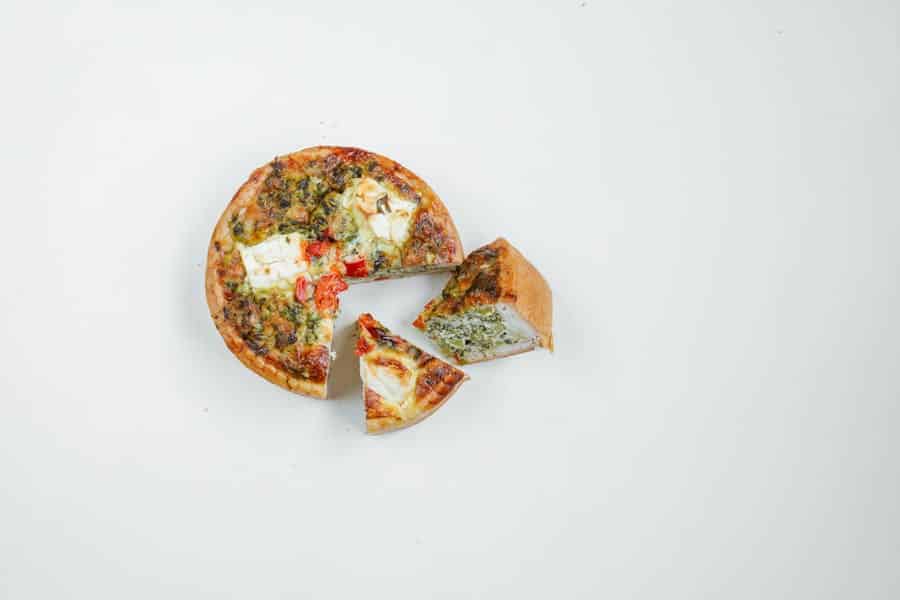
Regarding pizza, two American cities stand out for their distinctive styles: Detroit and Chicago. Both cities boast a rich history and a passionate fan base for their unique versions of this beloved dish. Detroit Pizza is known for its rectangular shape, crispy edges, and robust flavor, while Chicago Pizza is famous for its deep-dish, buttery crust and hearty fillings. This article delves into the heart of Detroit vs. Chicago pizza, comparing their origins, ingredients, cooking techniques, and cultural significance. Whether you prefer the crispy, cheesy goodness of Detroit or Chicago’s deep, savory layers, this exploration will give you a deeper appreciation for both styles and perhaps inspire your next pizza night choice.
The Origins of Detroit and Chicago Pizza
Understanding the roots of Detroit vs. Chicago pizza involves delving into the history and cultural influences that shaped these iconic dishes. Detroit Pizza traces its origins back to the mid-20th century when soldiers returning from World War II sought to recreate the pizza they had tasted in Italy. This led to the creating of a unique pizza style, characterized by its rectangular shape and caramelized cheese edges, baked in blue steel pans originally used for auto parts.
Chicago Pizza, on the other hand, emerged in the Windy City in the early 1940s. The deep-dish style was invented at Pizzeria Uno by Ike Sewell and Ric Riccardo. Their goal was to create a hearty, satisfying meal that differed from the thin, crispy pizzas found elsewhere. The thick, buttery crust and generous layers of cheese, meat, and tomato sauce became a hallmark of Chicago’s culinary scene.
Both Detroit and Chicago pizzas reflect their respective cities’ industrial and immigrant influences. Detroit’s pizza pays homage to the city’s automotive heritage, while Chicago’s deep dish reflects the diverse culinary traditions brought by its immigrant population. These origins contribute to the unique characteristics that make each style special.
The ingredients and preparation methods further distinguish Detroit vs. Chicago pizza. Detroit pizza typically features a thick, airy crust made with high-hydration dough, topped with Wisconsin brick cheese that caramelizes against the edges of the pan. The sauce is usually ladled on top of the cheese and toppings, allowing the crust to stay crispy.
In contrast, Chicago deep-dish pizza is constructed with a dense, buttery crust that forms a tall edge to hold in the generous fillings. Layers of mozzarella cheese, various toppings, and a chunky tomato sauce are stacked in reverse order compared to traditional pizzas, ensuring that the crust doesn’t become soggy during the long baking process.
Despite their differences, both styles have a common goal: to create a satisfying, flavorful pizza experience. The distinct ingredients and cooking techniques reflect the creativity and innovation of their creators, resulting in two iconic American pizzas that continue to delight pizza lovers nationwide.
Key Ingredients and Unique Cooking Techniques
The Crust: Foundation of Flavor
In the battle of Detroit vs. Chicago pizza, the crust plays a crucial role. Detroit pizza features a thick, airy crust made with a high-hydration dough. This dough creates a light and crispy texture, which is essential for achieving the characteristic caramelized cheese edges. The dough is pressed into a rectangular blue steel pan, which helps in creating the signature crispy bottom and edges.
Cheese and Toppings: Layers of Delight
Detroit Pizza is known for its use of Wisconsin brick cheese, which melts perfectly and caramelizes against the edges of the pan, creating a crispy, cheesy crust. Toppings are often placed directly on the dough, followed by cheese and then sauce, ensuring that the toppings stay moist and flavorful. Common toppings include pepperoni, sausage, and vegetables, which complement the rich, cheesy base.
The Sauce: A Flavorful Finish
The sauce in Detroit pizza is typically a robust, slightly sweet tomato sauce that is ladled over the cheese and toppings. This method helps to keep the crust crispy while infusing the pizza with a rich tomato flavor. The sauce is often seasoned with a blend of herbs and spices, adding depth to the overall taste.
Chicago Deep-Dish: Building the Layers
Chicago deep-dish pizza starts with a dense, buttery crust that forms a tall edge, capable of holding substantial fillings. The dough is pressed into a round, deep-pan, creating a sturdy base. The crust’s buttery flavor and flaky texture are key to its appeal.
Filling and Baking: An Art of Patience
In Chicago deep-dish pizza, the layering begins with slices of mozzarella cheese placed directly on the crust. This is followed by a generous amount of toppings such as sausage, pepperoni, and vegetables. Finally, a chunky tomato sauce is spread over the top, sealing in the flavors. The pizza is baked for a longer time at a lower temperature, allowing the crust to cook thoroughly without burning and ensuring that the fillings are heated through and melded together.
Cultural Impact and Popularity
- Detroit and Chicago pizzas have not only influenced the local culinary scenes but have also made a significant impact on American food culture. Detroit pizza, with its unique shape and crispy edges, has gained popularity beyond Michigan. Several pizzerias across the country now offer their versions of Detroit-style pizza, showcasing the versatility and appeal of this distinctive dish.
- Chicago’s deep-dish pizza, on the other hand, has become synonymous with the city itself. It’s a must-try for tourists and a staple for locals. The deep-dish style has inspired numerous adaptations and variations, from stuffed crusts to gluten-free options, catering to a wide range of preferences and dietary needs.
- The cultural impact of these pizzas extends to pop culture and media, where they are often featured in food shows, movies, and documentaries. This visibility has helped cement their status as iconic American foods. The rivalry between Detroit and Chicago pizza fans is a testament to the passion and pride associated with these regional specialties. Whether you prefer the crispy, cheesy edges of Detroit or the hearty, layered goodness of Chicago, both styles represent the rich diversity and creativity of American pizza-making.
How to Make Detroit and Chicago Pizza at Home?
Detroit Pizza
Making Detroit pizza at home involves a few key steps that ensure you achieve its signature crispy edges and flavorful toppings. Here’s a detailed guide to help you recreate this iconic pizza style in your kitchen.
Prepare the Dough: Start with a high-hydration dough recipe, which typically involves more water than standard pizza dough. This helps create the light and airy texture characteristic of Detroit pizza. Allow the dough to rise until it has doubled in size, which usually takes about 2-3 hours.
Shape the Dough: Once the dough has risen, press it into a well-oiled rectangular pan. Authentic Detroit Pizza uses blue steel pans, but any heavy, high-sided rectangular pan will work. Press the dough to the edges and corners, ensuring an even thickness throughout.
Add the Cheese: Cover the dough with a generous amount of Wisconsin brick cheese, extending it all the way to the edges of the pan. This step is crucial for achieving the crispy, caramelized cheese edges that Detroit Pizza is known for.
Toppings: Add your desired toppings on top of the cheese. Traditional options include pepperoni, sausage, and vegetables. Arrange them evenly over the pizza to ensure every bite has a mix of flavors.
Sauce: Unlike traditional pizzas, the sauce for Detroit pizza is added last. Spoon a robust, slightly sweet tomato sauce over the toppings, creating stripes or covering the pizza entirely based on your preference. This method helps maintain the crispy crust underneath.
Bake: Preheat your oven to 500°F (260°C) and bake the pizza for about 15-20 minutes. The high heat is essential for achieving the crispy edges and a well-cooked crust. Keep an eye on the cheese to ensure it caramelizes without burning.
Chicago Pizza
Creating Chicago deep-dish pizza at home requires patience and attention to detail to replicate its thick, buttery crust and layered fillings. Follow these steps for a delicious homemade deep-dish pizza.
Prepare the Dough: Start with a buttery dough recipe. This dough is richer and more similar to a pie crust than traditional pizza dough. After mixing, allow the dough to rest and rise for at least an hour. This step helps develop the dough’s flavor and texture.
Shape the Dough: Roll out the dough and press it into a deep round pan, ensuring it covers the bottom and sides completely. The dough should form a tall edge to hold all the fillings. Use a springform pan or a cast-iron skillet if you don’t have a deep-dish pizza pan.
Cheese Layer: Place slices of mozzarella cheese directly on the dough. This base layer of cheese prevents the crust from becoming soggy and adds a rich, creamy texture to the pizza.
Toppings: Add your desired toppings over the cheese layer. Traditional Chicago deep-dish pizzas often include Italian sausage, pepperoni, and a variety of vegetables. Be generous with the toppings, as the deep crust can hold a substantial amount.
Sauce: Spread a chunky, seasoned tomato sauce over the toppings. This sauce typically includes crushed tomatoes, garlic, and Italian herbs, creating a flavorful topping that complements the rich fillings. Make sure the sauce covers all the toppings completely.
Bake: Preheat your oven to 425°F (220°C) and bake the pizza for 30-40 minutes. The lower baking temperature and longer cooking time ensure the thick crust is fully cooked and the fillings are heated through. The crust should be golden brown and slightly crispy.
Warping Up
In the debate of Detroit vs. Chicago pizza, there is no definitive winner—only personal preference. Both styles offer unique and delicious experiences, reflecting the rich culinary traditions of their respective cities. Detroit Pizza impresses with its crispy, cheesy edges and robust flavor, while Chicago Pizza delights with its deep, layered construction and hearty fillings. Whether you’re a fan of one or appreciate both, understanding the differences and histories of these iconic pizzas enhances the enjoyment of each bite. So, next time you crave pizza, consider trying both styles and savor the diverse flavors they bring to the table.
FAQ’s
Q. What is the main difference between Detroit and Chicago pizza?
A. Detroit pizza is rectangular with a crispy, caramelized cheese edge, while Chicago pizza is round with a thick, buttery crust and layers of cheese and toppings.
Q. Which pizza style is healthier?
A. Both pizzas are indulgent and not typically considered health foods. However, you can make healthier versions by using whole-grain crusts, lean proteins, and plenty of vegetables.
Q. Where can I find authentic Detroit and Chicago pizza?
A. Many pizzerias across the country offer authentic versions of both styles. In their respective cities, places like Buddy’s Pizza in Detroit and Pizzeria Uno in Chicago are renowned for their authentic offerings.








